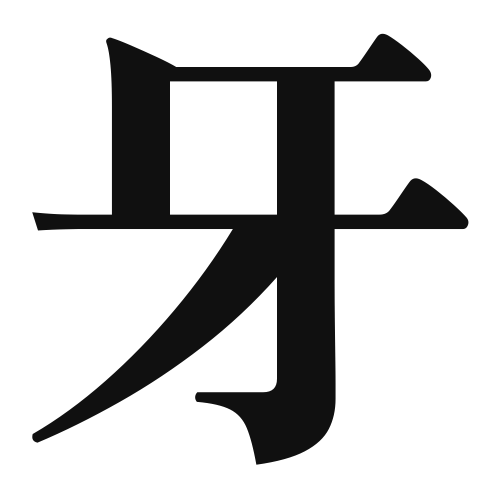1. Overview of Meaning
The kanji “牙” (pronounced “ga” or “yō”) means “tusk” or “fang.” It refers to the long, pointed teeth found in certain animals, particularly carnivorous ones, and is often associated with strength and ferocity.
2. Formation and Radical
Formation of the Kanji: The kanji “牙” is a pictogram, originally depicting the shape of a tooth. It belongs to the category of ideograms as it conveys the concept of a sharp tooth or fang.
Radical: The radical for “牙” is also “牙,” which is used in other kanji related to teeth or fangs.
3. Examples of Usage
Common Words and Phrases:
- 牙医 (がい, “dentist”)
- 犬の牙 (いぬのが, “dog’s fang”)
Example Sentences in Daily Conversation:
- その動物は大きな牙を持っています。 (That animal has large fangs.)
- 彼は牙のように鋭い意見を持っています。 (He has opinions as sharp as fangs.)
4. Synonyms and Antonyms
Similar Kanji:
- 歯 (は, “tooth”) – Refers to any tooth, not specifically sharp or pointed like “牙.”
Antonyms:
- 無 (む, “none”) – Represents the absence of something, contrasting with the presence of fangs or teeth.
5. Cultural and Historical Background
Relation to Japanese Culture: In Japanese culture, “牙” can symbolize power and ferocity, often seen in folklore and mythology where creatures with fangs are depicted as strong or fearsome.
Proverbs and Idioms:
- 牙を剥く (がをむく, “to bare one’s fangs”) – This phrase means to show one’s true aggressive nature.
